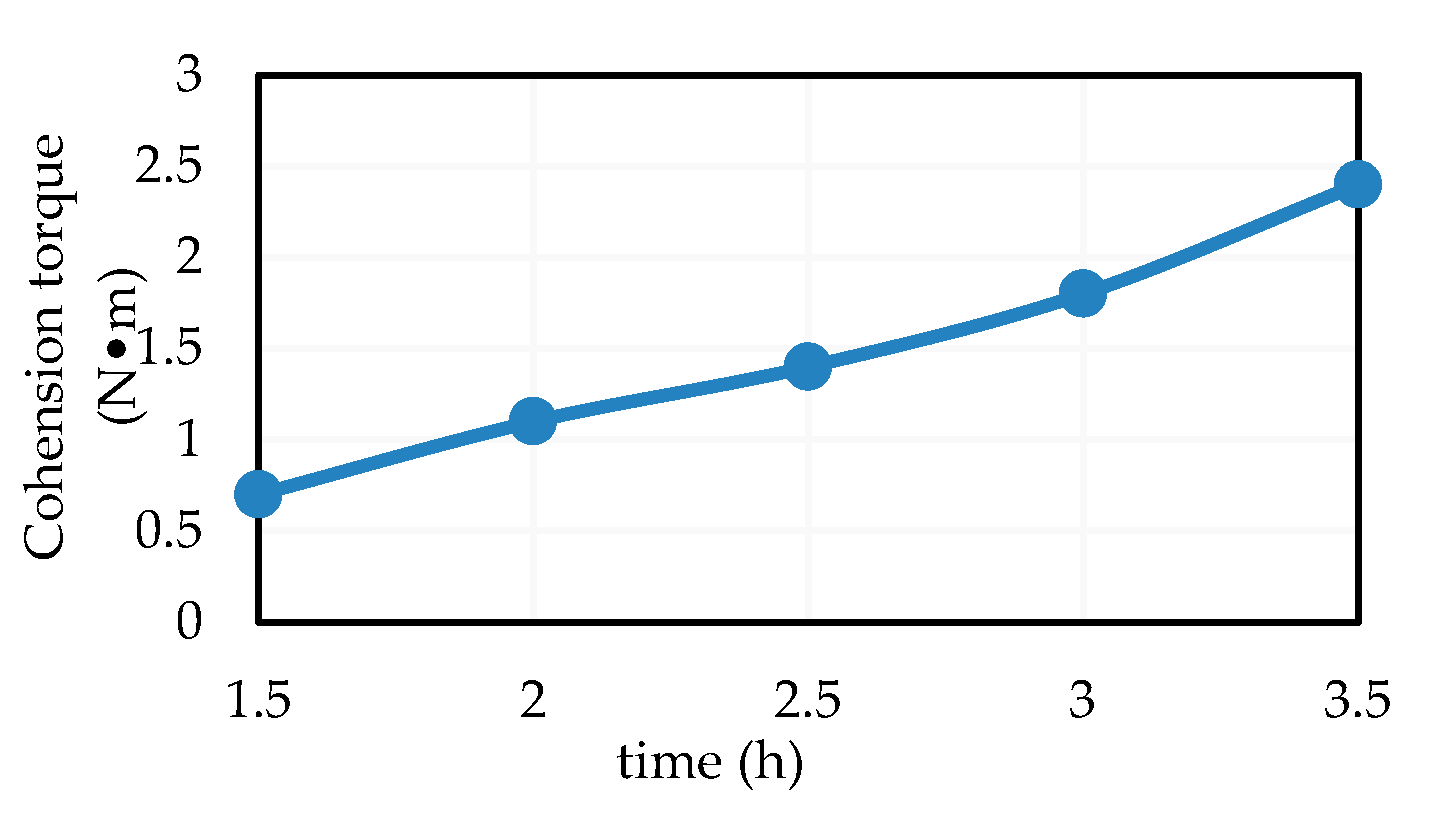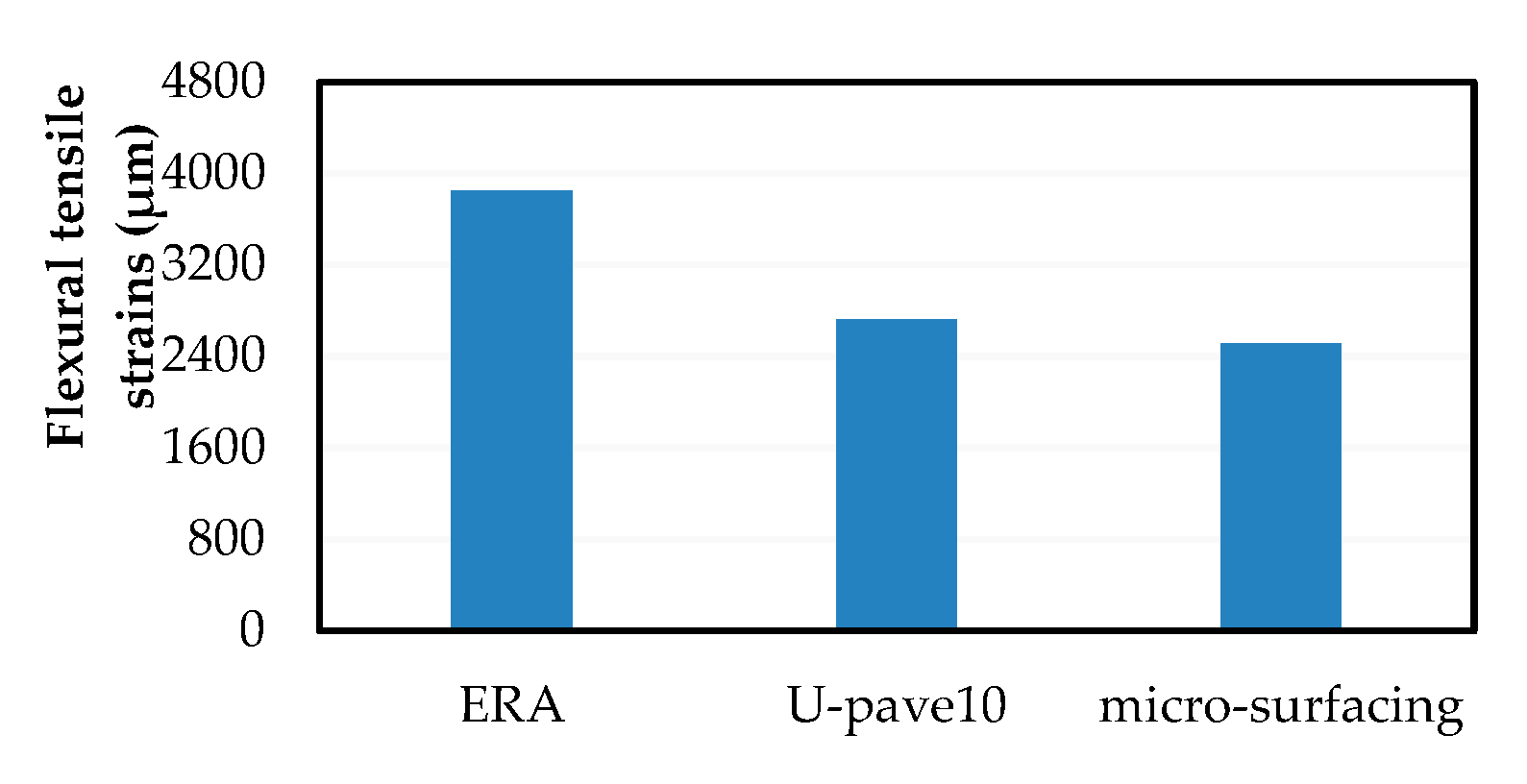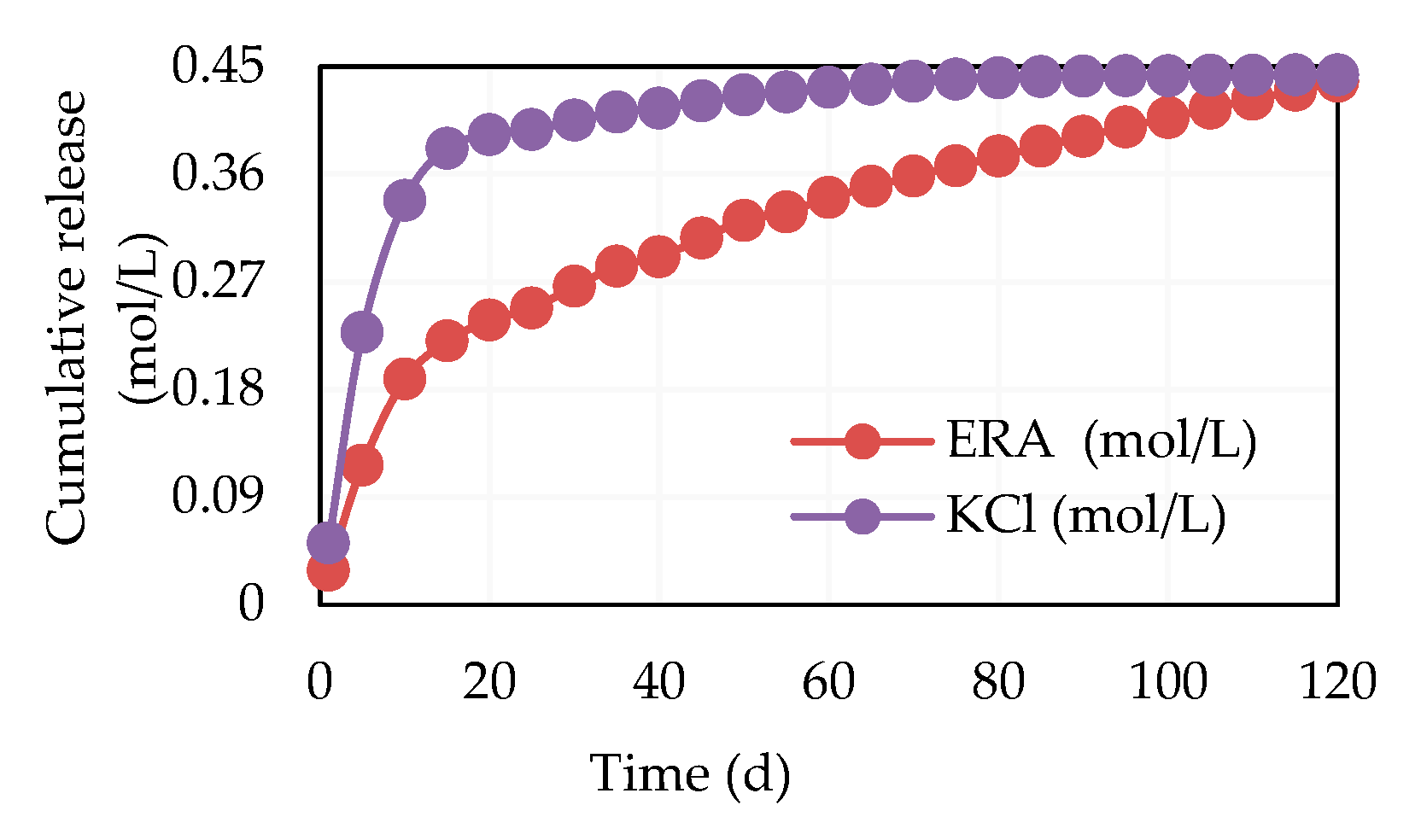Innovative Design of Paving Cold Mix and Cohesive Overlays for Sustainable Pavement Maintenance †
Abstract
:1. Introduction
2. Materials and Methods
2.1. Materials
2.2. Gradation
3. Results and Discussion
4. Conclusions
- (1)
- The freezing temperature of cold asphalt mixtures dropped to much lower than −10 °C. This technology shortened the open-to-traffic time to 3.5 h after construction;
- (2)
- The ERA cold mix overlay had excellent water damage and cracking resistance performance. The flexural tensile strains could reach 3848.6 µε, which was higher than that of micro-surfacing and U-pave 10 hot asphalt mixtures;
- (3)
- The performance of ERA cold mixtures met the ISSA standards. The durability of anti−icing cold mixtures could reach 95 days when soaked in water. Thereby, the new-tech cold mix overlay had shown promising applications in North America.
Author Contributions
Funding
Institutional Review Board Statement
Informed Consent Statement
Data Availability Statement
Conflicts of Interest
References
- Ji, J.; Liu, L.H.; Suo, Z.; Xu, Y.; Yang, S.; Xu, S.F. Performances of micro-surfacing with waterborne epoxy resin modififiedemulsifified asphalt. J. Chang’an Univ. (Nat. Sci. Ed.) 2017, 37, 23–30. (In Chinese) [Google Scholar]
- Zheng, M.L.; Fan, X.P.; Liu, F.Q.; Li, H.Y.; Lin, X.Y. Durability of compound waterborne epoxy emulsifified as phalt microsurfacing. J. Chang’an Univ. (Nat. Sci. Ed.) 2020, 40, 68–76. (In Chinese) [Google Scholar]
- Wang, L.; Lu, P.; Hao, P.W. Factors affecting pavement performance of micro-surfacing mixture. J. Chang’an Univ. (Nat. Sci. Ed.) 2014, 34, 29–33. (In Chinese) [Google Scholar]
- Luo, Y.; Zhang, K.; Xie, X.; Yao, X. Performance evaluation and material optimization of Micro-surfacing based on cracking and rutting resistance. Constr. Build. Mater. 2019, 206, 193–200. [Google Scholar] [CrossRef]
- Yu, J.M.; Yang, N.K.; Chen, F.D.; Chen, Y.L.; Lin, Z.H.; Yu, H.Y. Design of Cold-Mixed High-Toughness Ultra-Thin Asphalt Layer towards Sustainable Pavement Construction. Buildings 2021, 11, 619. [Google Scholar] [CrossRef]
- Research Institute of Highway Ministry of Transport. Standard Test Methods of Bitumen and Bituminous Mixtures for Highway Engineering; Ministry of Transport of the People’s Republic of China: Beijing, China, 2011. (In Chinese) [Google Scholar]




| Test Item | Units | Technical Requirement |
|---|---|---|
| Freezing Point (20% aqueous solution) | °C | ≤−14 |
| Quality Loss (170 °C) | % | ≤0.5 |
| Corrosion Rate | mm/a | ≤0.15 |
| Water Content | % | ≤3 |
| Sieve Diameter | Percentage Passing (%) | ERA | PPF | Cement | PREA | |||||||
|---|---|---|---|---|---|---|---|---|---|---|---|---|
| 9.5 | 4.75 | 2.36 | 1.18 | 0.6 | 0.3 | 0.15 | 0.075 * | |||||
| Limits | 100 | 70–90 | 45–70 | 28–50 | 19–34 | 12–25 | 7–18 | 5–15 | 5% | 0.3% | 1.5% | 11% |
| Gradation | 100 | 79.0 | 56.6 | 35.6 | 25.2 | 13.9 | 8.7 | 1.8 | ||||
| Test Item | ERA | Micro-Surfacing | Units | Technical Requirement |
|---|---|---|---|---|
| Mixing time/s | 180 | 138 | / | ≥120 |
| Breaking time/min | 20 | 5 | / | / |
| Cohesion torque /(N·m) | 2.40 (3.5 h) | 2.15 | / | ≥2.0 |
| Wet track abrasion test 1 d/(g/m2) | 90.4 | 74.1 | / | ≥538 |
| Wet track abrasion test 1 d/(g/m2) | 219.6 | 158.8 | / | ≥807 |
| Load wheel test (g/m2) | 198.6 | 167.3 | / | ≥538 |
Disclaimer/Publisher’s Note: The statements, opinions and data contained in all publications are solely those of the individual author(s) and contributor(s) and not of MDPI and/or the editor(s). MDPI and/or the editor(s) disclaim responsibility for any injury to people or property resulting from any ideas, methods, instructions or products referred to in the content. |
© 2023 by the authors. Licensee MDPI, Basel, Switzerland. This article is an open access article distributed under the terms and conditions of the Creative Commons Attribution (CC BY) license (https://creativecommons.org/licenses/by/4.0/).
Share and Cite
Chen, X.; Wang, X.; Ma, T.; Tighe, S.; Li, N. Innovative Design of Paving Cold Mix and Cohesive Overlays for Sustainable Pavement Maintenance. Eng. Proc. 2023, 36, 60. https://doi.org/10.3390/engproc2023036060
Chen X, Wang X, Ma T, Tighe S, Li N. Innovative Design of Paving Cold Mix and Cohesive Overlays for Sustainable Pavement Maintenance. Engineering Proceedings. 2023; 36(1):60. https://doi.org/10.3390/engproc2023036060
Chicago/Turabian StyleChen, Xiang, Xiaohu Wang, Tao Ma, Susan Tighe, and Ningyuan Li. 2023. "Innovative Design of Paving Cold Mix and Cohesive Overlays for Sustainable Pavement Maintenance" Engineering Proceedings 36, no. 1: 60. https://doi.org/10.3390/engproc2023036060
APA StyleChen, X., Wang, X., Ma, T., Tighe, S., & Li, N. (2023). Innovative Design of Paving Cold Mix and Cohesive Overlays for Sustainable Pavement Maintenance. Engineering Proceedings, 36(1), 60. https://doi.org/10.3390/engproc2023036060







